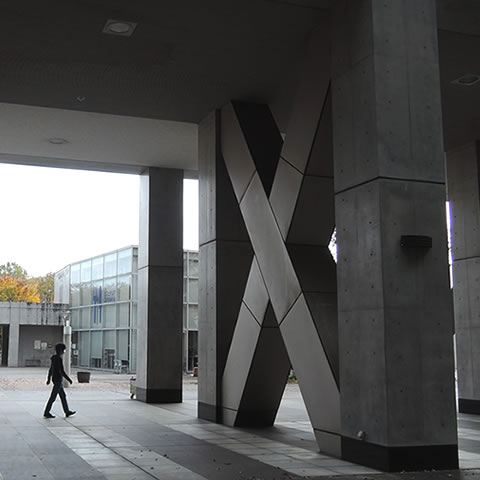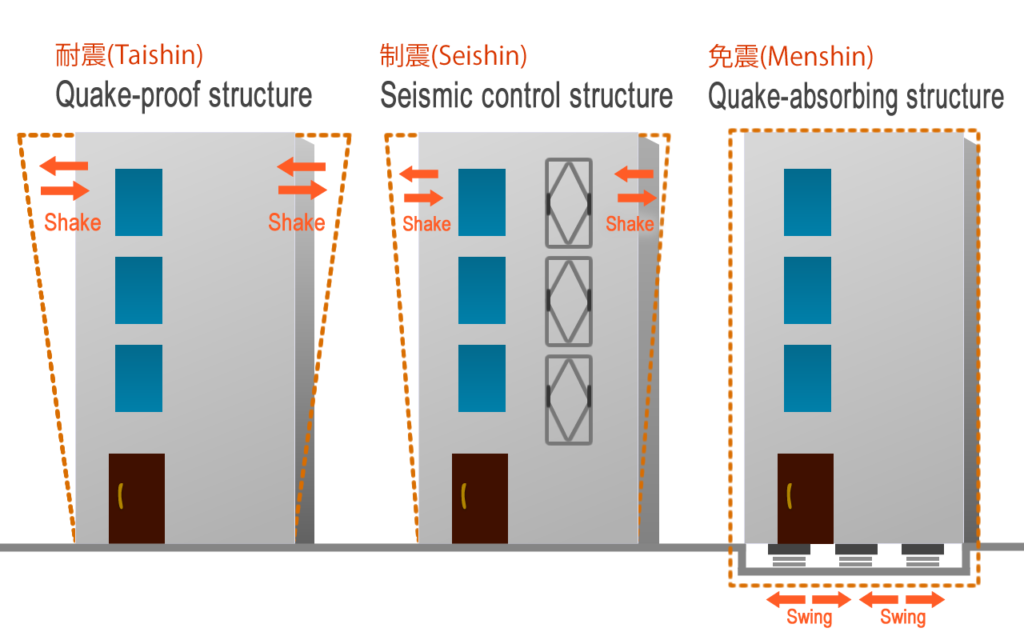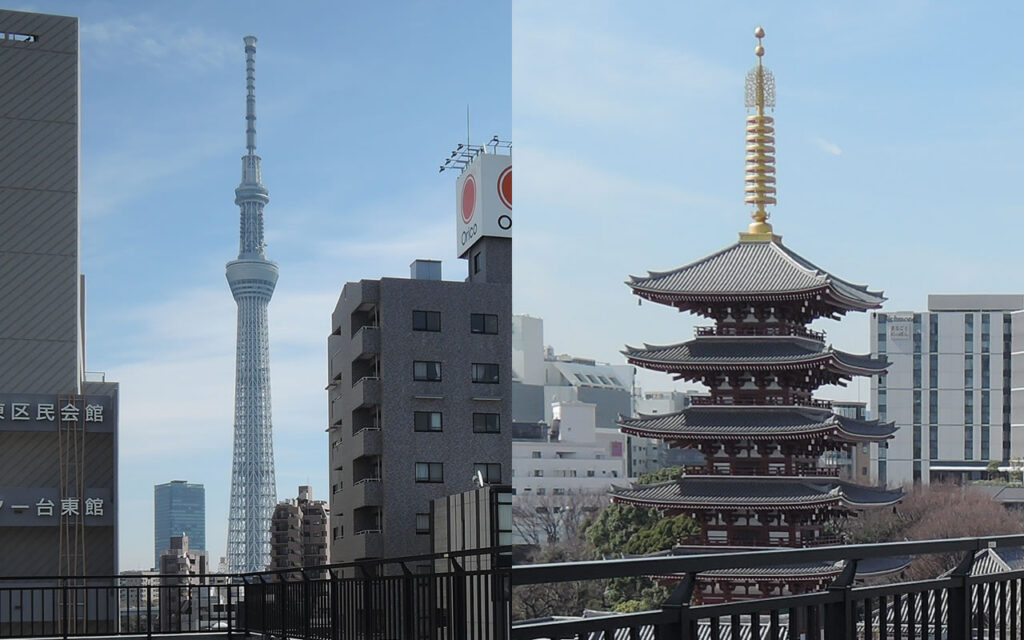Japan is an earthquake-prone country where the law requires earthquake-resistant measures for buildings construction. Thanks to the steady progress in earthquake-resistant technologies along with the legal requirements, more housing buildings have quake-proof capabilities lately. However, it still can concern people to know what measures are required for their houses. So, here is the information to learn about earthquake-resistant structures of the building and how to assess the capability.
Earthquake building codes in Japan
In Japan, housing must comply with the seismic standard (耐震基準) or earthquake building codes, which have been determined by the Building Standards Law of Japan (建築基準法). The construction is not permitted unless the building plan does fulfill the code requirements. Additionally, the conformity inspection is conducted when the construction is completed so that the double-check ensures the seismic resistance of the actual building.
The earthquake building codes, stipulated as the seismic standard by law, have been amended several times in response to destructive earthquake occurrences in the past. For that reason, there are fundamentally two legal standards called Old Seismic Standards (旧耐震基準)” and “New Seismic Standards (新耐震基準). The major difference between the new and old seismic standards is that the new standard is more strictly regulated. The current “New Seismic Standards” has been adopted to buildings constructed after June 1981, and buildings built before that year are subject to comply with the old seismic standards.
Three construction methods to ensure earthquake resistance
According to the Ministry of Land, Infrastructure, Transport and Tourism (MLIT), the new seismic standard requires earthquake resistances that should be “almost undamaged by moderate earthquakes” and “not likely to collapse by a seismic motion that occurs once every few hundred years.” Currently, three construction methods are provided to fulfill these requirements; Quake-proof, Semitic-control, and Quake-absorbing structures, and each have characteristics as follows.
Quake-proof structure (耐震 Taishin)
The quake-proof structure realizes reinforcement by the use of sturdy columns, beams, and other construction techniques. Detached houses are often designed in this structure. One thing to note is that quake-proof is to prevent damage and collapse of the building, not to suppress shakes. The shaking will increase in proportion to the magnitude of the earthquake.
Seismic control structure (制震 Seishin)
Shaking control devices such as dampers are installed in the structural frame to reduce seismic forces affecting the building and prevent damage and collapse. This structure will diminish shaking more than earthquake-resistant structures.
Quake-absorbing structure (免震 Menshin)
The feature of this structure is an installation of intensive devices to cancel out the shaking, allowing control of the seismic force affecting the building. The quake-absorbing system is realized in several construction technologies. For example, high-rise buildings usually have a seismic isolator system at the base, where it cancels out seismic forces. Note that the long-period seismic motion may laterally swing buildings in this structure, depending on height and other factors.
Incidentally, Japan has a long history of developing seismic isolation technologies, and the one that represents such technologies can be seen in the five-story pagodas at temples. The five-story pagoda has a long pillar called the “core pillar” or “心柱 Shinbashira” through the center, which cancels earthquakes’ shaking. This technology is also introduced in the Tokyo Sky Tree.
How to find the earthquake resistance of a building
The seismic performance of a building varies depending on the construction method, structure, and ground state. Since it requires specific knowledge to assess the capability, it allows to find it from Seismic resistance grade (耐震等級) stipulated as a part of the Housing Performance Indication System” under the Housing Quality Assurance Law enacted in 2000. The seismic resistance grade comprises three levels; Grade 1, Grade 2, and Grade 3, and the higher the number, the higher the seismic performance. Each grade indicates as;
Grade 1: Holds essential legally-required seismic capability
Grade 2: Withstands 1.25 times the seismic force than Grade 1
Grade 3: Withstands 1.5 times the seismic force than Grade 1
Generally, Grade 1 is the standard grade generally required for housing, Grade 2 is required for hospitals and school buildings, and Grade 3 is for fire and police stations.
Under the Housing Performance Indication System, an authorized inspector (from a registered evaluation agency) assesses the seismic performance and summarizes the result in a “Housing Performance Evaluation Report (住宅性能評価書),” where you can find the seismic resistance grade. However, the report is to provide on a voluntary basis. If no evaluation report is available, you may ask a specialized organization for the seismic assessment.
The housing performance evaluation report is delivered in two different documents, depending on when the assessment is conducted. The one is Housing performance evaluation report at the design stage (設計住宅性能評価書), the results summarized at the design stage, and the other is Construction housing performance evaluation report (建設住宅性能評価書), the results through the construction to completion. It is important to remember that each report ensures legal evaluations that affect dealing situations, such as building a new house, buying/selling a home, and purchasing earthquake insurance.
Quake-proof doesn’t mean shake-proof. Disaster preparedness is always necessary.
The earthquake-resistant structure is to prevent collapsing of the structural frame, not to prevent complete shaking. Even the quake-proof structure helps mitigate shaking, the chance that it will stir during an earthquake as big as you can hardly stand on, and furniture and those household equipment in rooms will fall over. Whatever type of earthquake-resistant building you live in, preparedness is always necessary to prevent injuries.
Earthquake preparedness items
Cupboard door closer (食器棚の扉開き防止器具)
The closer reacts to shaking and locks the door to prevent dishes and glasses shaken out from the cupboard.
Tension rod (つっぱり棒)
A wardrobe standing on the wall can easily fall over by the shaking if it has a space between the ceiling. Fix the wardrobe with a tension bar to prevent it from tipping over.
Quake resistant gel pad (転倒防止ジェルパッド)
This is a gel pad that you can use to fix TV and PC displays or those easy-to-fall-over appliances on the table. Attach this adhesive pad to the bottom of items and fix them.
Caster stoppers (キャスターストッパー)
This stopper prevents caster wheel movement. Casters on items like TV board casters and piano will move around while shaking. Even in a high-rise apartment with seismic isolation structures, pianos may move around by wave-like horizontal swing.
Window films (窓フィルム)
Apply glass safety films on windows. It is dangerous to walk on broken glass scattered on the floor, and shattered glass is more likely to injure people who wear no shoes in Japanese-style rooms.
In addition to being secure from the shaking, you also need to consider days after the quake hit. You will definitely need water, food, and electric chargers to survive until the infrastructure recoveries.
Thinking about may-upcoming disasters makes us feel gloomy, but we cannot ignore preparedness. So, it is suggested to take it with a free phase concept and blend the preparedness into daily life, for example, preparing delicious stock food, a stylish emergency backpack, etc. We should not only rely on the earthquake resistance of buildings and take measures ourselves so that we can spend days with peace of mind.




